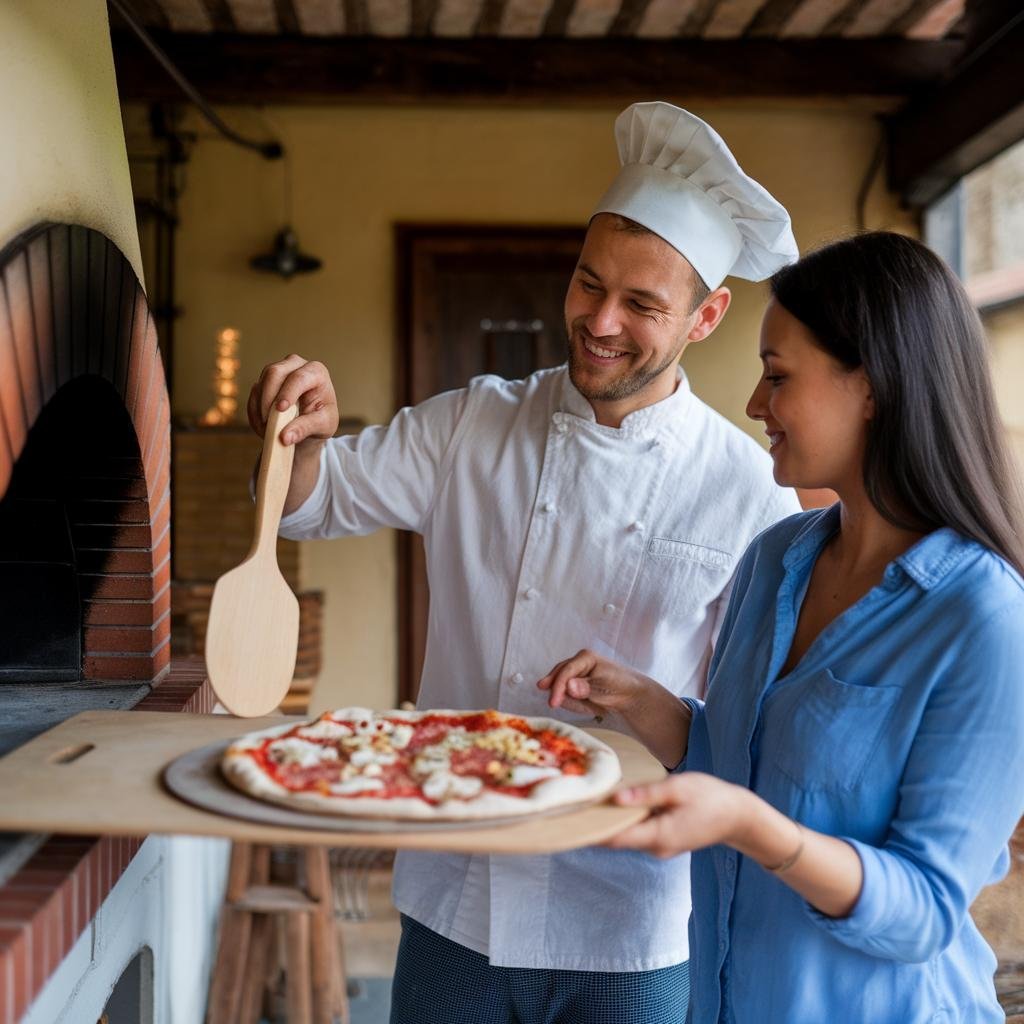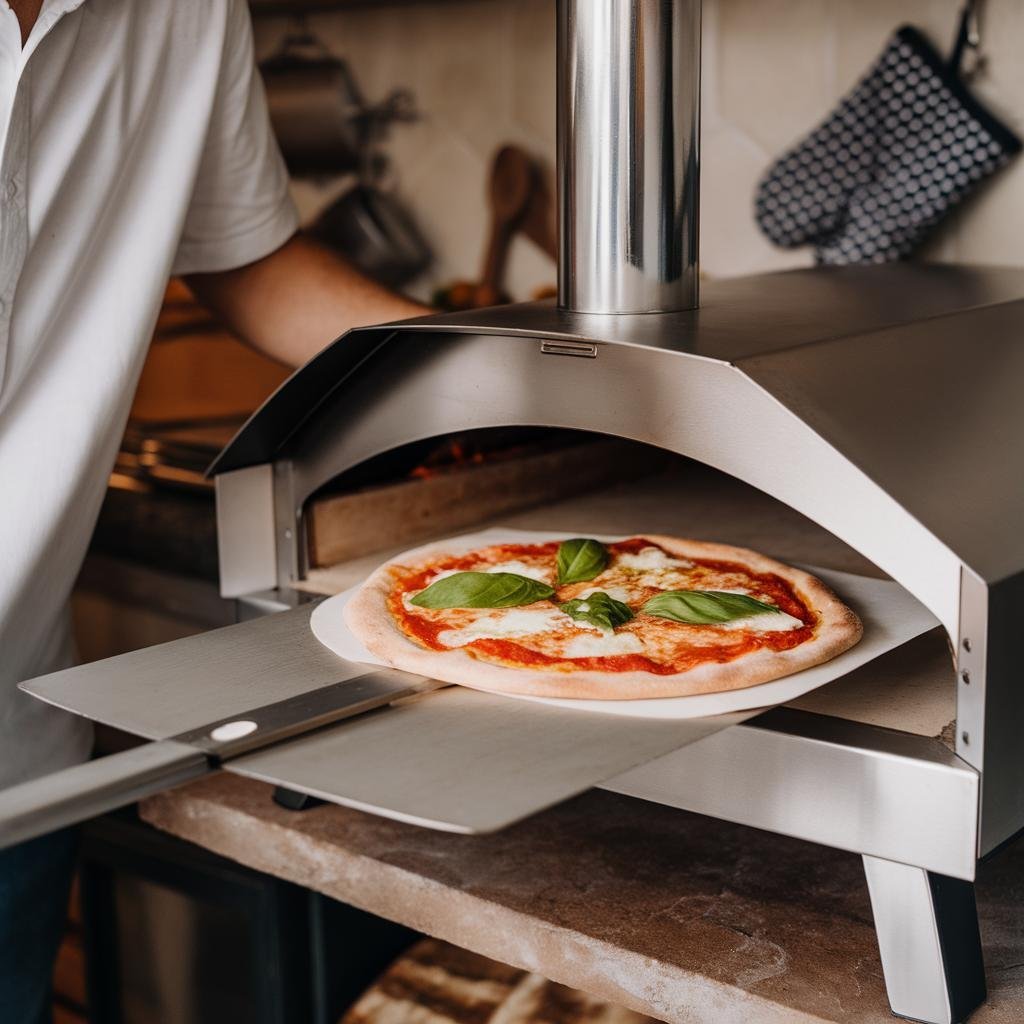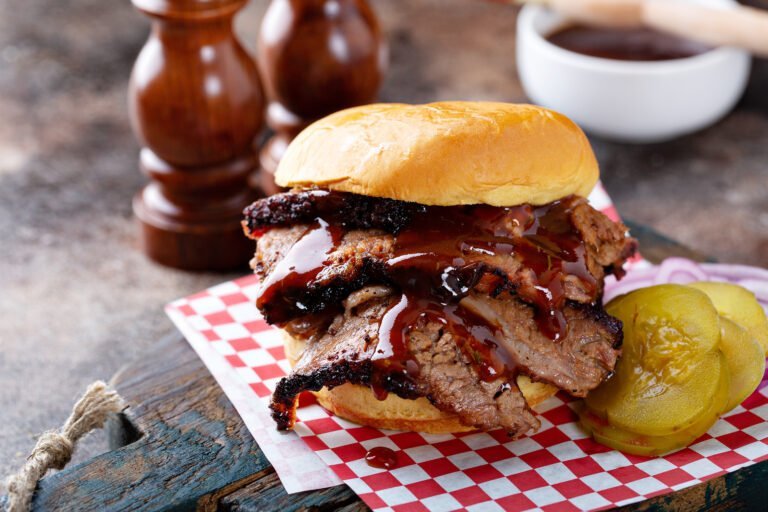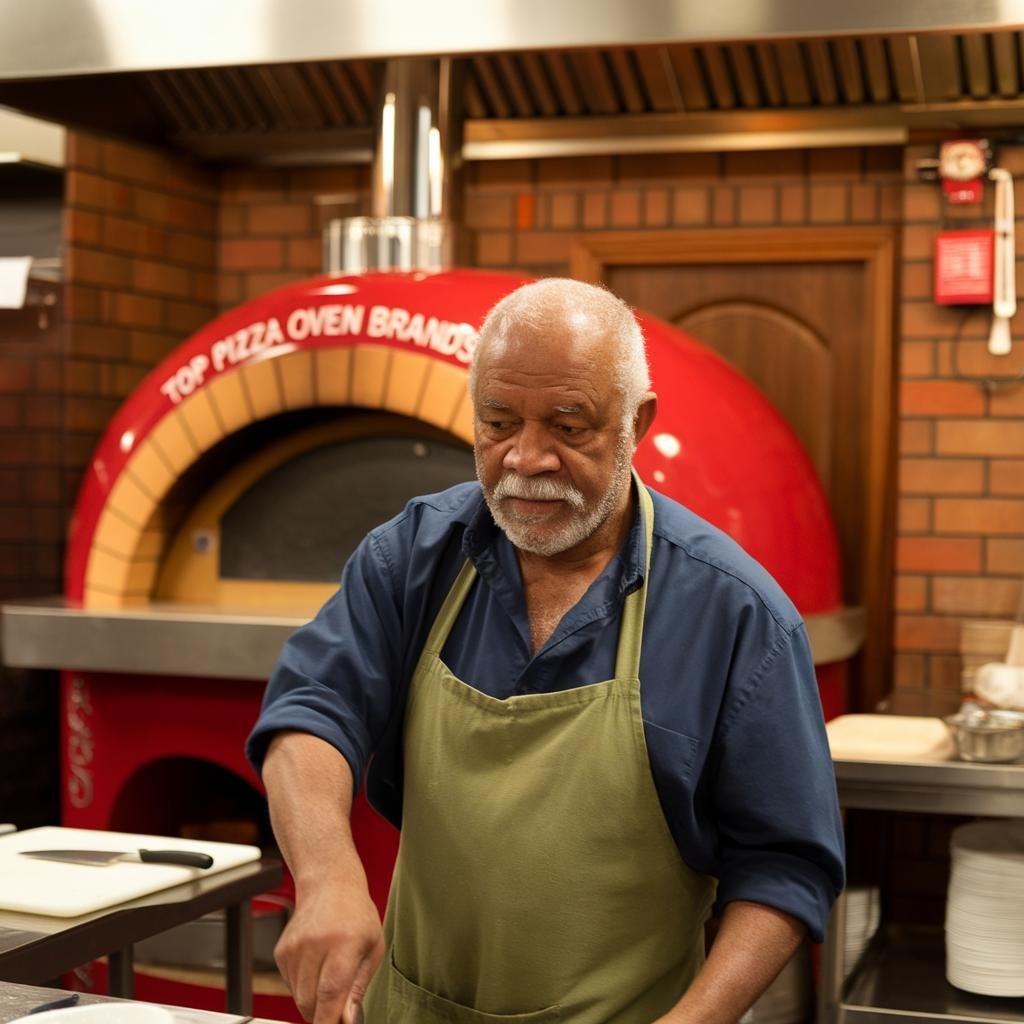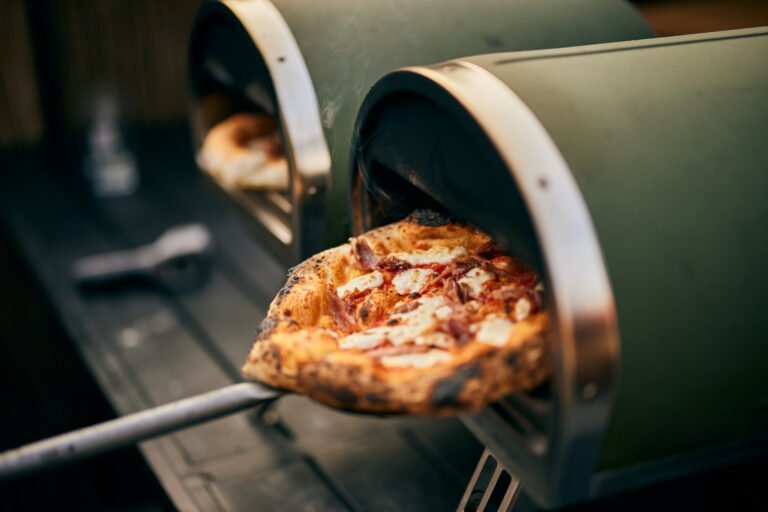Disclosure: This Post Contains Affiliate Links; We earn a commission on purchases.
Welcome to the ultimate guide on mastering pizza oven cooking! If you aspire to create wood-fired pizza masterpieces in the comfort of your own home, this is the perfect resource for you. In this expert pizza oven guide, we will cover everything you need to know, from wood-fired pizza recipes and outdoor pizza oven techniques to Italian pizza making tips and homemade pizza dough. Whether you’re a seasoned home chef or just starting your pizza-making journey, this guide will help you become a true artisanal pizza baker.
Key Takeaways:
- Discover the secrets to achieving perfect wood-fired pizza flavors at home.
- Learn outdoor pizza oven techniques that will elevate your pizza-making skills.
- Uncover Italian pizza making tips for creating authentic and delicious pizzas.
- Create homemade pizza dough that will take your pizzas to the next level.
- Master the art of brick pizza oven cooking with step-by-step instructions.
Understanding the Importance of Pizza Oven Temperature
Pizza oven temperature plays a critical role in the art of pizza-making. It is the secret ingredient that determines the texture, flavor, and overall quality of the final product. Achieving the perfect pizza requires careful control and management of the oven temperature.
A well-regulated, high-temperature oven creates a heavenly pizza experience. It produces a crisp and golden crust that provides a delightful crunch with every bite. The high heat also ensures the cheese is perfectly melted, creating that gooey and indulgent sensation we crave. At the same time, the interior of the pizza remains wonderfully chewy, balancing the textural elements.
When the oven temperature is not properly calibrated, it can adversely affect the quality of the pizza. Cooking at too low a temperature may result in a soft and undercooked crust, leaving you with a disappointing dining experience. On the other hand, cooking at too high a temperature can quickly lead to burnt edges and a dry, overly crisp crust.
“The secret of a great pizza lies in the perfect harmony of temperature. It’s the symphony that creates the ideal balance of texture and flavor.”
Next to the quality of the ingredients and the skill of the chef, the pizza oven temperature is the key that unlocks a memorable pizza experience. Whether you prefer a classic Margherita or an adventurous combination of toppings, mastering the art of controlling the pizza oven temperature is the gateway to pizza perfection.
Top Tips for Mastering Pizza Oven Temperature:
- Invest in a reliable pizza oven thermometer to ensure accurate temperature readings.
- Preheat the oven to the recommended temperature before placing the pizza inside.
- Understand the optimal temperature range for the style of pizza you are making.
- Experiment with variations in temperature to create unique textures and flavors.
- Rotate the pizza during cooking to ensure even heat distribution.
By paying attention to the pizza oven temperature, you can elevate your pizza-making skills and create pizzas that rival your favorite pizzeria. It’s the combination of the perfect temperature, quality ingredients, and expert technique that results in a truly memorable pizza experience.
Selecting the Right Pizza Oven Temperature
When it comes to achieving the ideal pizza cooking experience, selecting the right pizza oven temperature is key. Different pizza styles require different temperature ranges to achieve the perfect crust texture, topping cook, and flavor profile.
For those craving a classic New York-style pizza, a slightly lower temperature is recommended. Aim for a range between 500°F and 550°F (260°C and 290°C) to achieve that thin, crispy crust with just the right amount of chewiness. This temperature range allows the toppings to cook evenly while maintaining a delicate balance of flavors.
On the other hand, if you’re aiming to create an authentic Neapolitan pizza, you’ll need to crank up the heat. The traditional Neapolitan pizza requires a very high temperature of around 800°F (427°C). This high heat creates a blistered, chewy crust with a soft and tender interior, resulting in a truly traditional Neapolitan experience.
Understanding the appropriate temperature range for the pizza style you’re cooking ensures that you achieve the desired crust texture, topping cook, and overall flavor profile. Whether you’re craving a New York-style pizza or a Neapolitan masterpiece, controlling the temperature is the key to pizza perfection.
Experiment with different temperature ranges and observe how it affects the texture, flavors, and overall outcome of your pizzas. Every pizza chef has their preferred temperature, and it’s all about finding the sweet spot that creates your signature pie.
Pizza Oven Temperature Guidelines
| Pizza Style | Temperature Range (°F) | Temperature Range (°C) |
|---|---|---|
| New York-style | 500°F – 550°F | 260°C – 290°C |
| Neapolitan | Around 800°F | Around 427°C |
Measuring and Controlling Pizza Oven Temperature
When it comes to creating perfect pizzas, measuring and controlling the temperature of your pizza oven is crucial for consistent and delicious results. To ensure a reliable temperature reading, it’s essential to utilize a pizza oven thermometer. This handy tool allows you to accurately monitor the internal temperature of your oven, providing you with the information you need to adjust accordingly and maintain optimal cooking conditions.
Understanding the heat distribution within your pizza oven is equally important for achieving consistent results. Heat can vary within the oven, with hotspots and cooler areas. By understanding how heat is distributed, you can strategically position your pizzas for even cooking and avoid any potential over or undercooking.
Another technique that aids in achieving even cooking is rotating the pizza during the baking process. By rotating the pizza, you ensure that each side receives equal heat exposure, resulting in a well-cooked crust with golden brown edges and evenly melted cheese.
By incorporating these techniques—using a pizza oven thermometer, understanding heat distribution, and rotating your pizza—you’ll have greater control over the cooking process, allowing you to consistently produce mouthwatering pizzas with perfect crusts and irresistible flavors.
Benefits of Measuring and Controlling Pizza Oven Temperature
“Measuring and controlling the temperature of your pizza oven ensures consistent results, giving you the ability to create pizzas with the perfect balance of crispy crust and gooey cheese.”
| Benefits | Explanation |
|---|---|
| Consistent Results | A pizza oven thermometer provides accurate temperature readings, allowing you to replicate your desired cooking conditions, ensuring consistent results every time. |
| Crust Perfection | Understanding your oven’s heat distribution and rotating the pizza ensures even cooking, resulting in a crispy and evenly golden crust. |
| Melted Cheese Delight | Controlling the temperature prevents under or overcooking, resulting in perfectly melted cheese that adds a gooey and flavorful element to your pizza. |
| Flavor Enhancement | Consistent temperature allows your pizza’s flavors to develop harmoniously, creating a delicious balance between the toppings, crust, and sauce. |
Troubleshooting Pizza Oven Temperature Fluctuations
While using a pizza oven, temperature fluctuations can occur, leading to inconsistent cooking results. These fluctuations can be caused by various factors, such as inconsistent fuel supply or issues with the oven’s insulation. To ensure a consistently cooked and delicious pizza, it’s important to address and troubleshoot these temperature fluctuations.
Regular Monitoring and Adjustment
Regularly monitoring the temperature of your pizza oven is crucial for maintaining consistent cooking conditions. Use a reliable pizza oven thermometer to accurately measure the temperature, ensuring that it remains within the desired range. If you notice any significant fluctuations, it’s important to make immediate adjustments to stabilize the temperature.
Understanding Heat Distribution
Understanding the heat distribution within your pizza oven can help you avoid common cooking mishaps, such as overcooking or undercooking. Certain areas of the oven may have hotter or cooler spots, which can affect the cooking time and overall doneness of the pizza. By rotating the pizza during cooking, you can ensure even heat distribution and achieve a perfectly cooked crust and toppings.
| Issue | Cause | Solution |
|---|---|---|
| Inconsistent fuel supply | Uneven distribution of wood or charcoal | Ensure an even supply of fuel and maintain a consistent flame |
| Temperature fluctuations | Insufficient insulation or air leaks in the oven | Check for any insulation gaps or leaks and make necessary repairs |
By addressing these common issues, you can minimize temperature fluctuations and create consistently delicious pizzas. Remember to regularly monitor and adjust the temperature, and understand the heat distribution in your pizza oven for optimal results.
Achieving Perfect Results with Precise Temperature Control
When it comes to creating the perfect pizza, precise temperature control is the key to achieving outstanding results. The ability to regulate and maintain the ideal temperature throughout the cooking process ensures a pizza with a crispy crust, melty cheese, and balanced flavors that will leave your taste buds craving for more.
By mastering the art of precise temperature control, you can elevate your pizza-making skills to new heights and create a gastronomic masterpiece that will impress even the most discerning pizza connoisseurs.
Imagine a perfectly cooked pizza with a crunchy crust that gives way to a soft and chewy interior, topped with a generous layer of beautifully melted cheese. Each bite bursts with a harmonious blend of flavors, leaving you with a truly memorable pizza experience.
Unleashing the Power of Consistent Heat
One of the main advantages of precise temperature control is the ability to harness the power of consistent heat. Whether you’re using a wood-fired pizza oven, a gas-fired oven, or an electric oven, maintaining a steady and accurate temperature ensures that your pizza cooks evenly and thoroughly.
“Precise temperature control allows the flavors of the pizza to develop harmoniously, with each ingredient reaching its full potential. It sets the stage for a perfect pizza outcome.” – Chef Giovanni Rossi
Optimizing the Cooking Process
With precise temperature control, you can optimize the cooking process to achieve the best results. It allows the dough to rise and develop its signature texture, resulting in a crust that is crispy on the outside and delightfully chewy on the inside.
In addition, precise temperature control ensures that the cheese melts to perfection, creating that irresistible gooeyness that brings the pizza together. The balance of flavors is also enhanced, as the ingredients are cooked just right, allowing their unique characteristics to shine.
The Perfect Pizza Outcome with Precise Temperature Control
| Benefits of Precise Temperature Control | Effects on Pizza Outcome |
|---|---|
| 1. Crispy crust | Achieves a golden-brown crust that’s crunchy on the outside |
| 2. Melty cheese | Ensures that the cheese is perfectly melted and gooey |
| 3. Balanced flavors | Optimizes the flavors of the ingredients, resulting in a harmonious blend |
With precise temperature control, you have the power to create a pizza that is a work of culinary art. Every element, from the crust to the toppings, is beautifully crafted to deliver a pizza experience that will have your guests raving and coming back for more.
Experimenting with Temperature Variations
When it comes to pizza-making, temperature variations present an exciting opportunity for experimentation. By adjusting the heat levels, you can unlock a whole new world of unique textures and flavors in your homemade pizzas.
Temperature plays a crucial role in the pizza-making process, affecting the dough, cheese, and toppings. Through careful temperature control, you can achieve customized results that suit your preferences.
Varying Textures and Flavors
Experimenting with temperature allows you to create pizzas with distinct textures and flavors. Higher temperatures generate a crisper crust, providing a delightful contrast to the chewy interior. The cheese melts perfectly, creating a gooey and indulgent experience. Meanwhile, lower temperatures yield a softer crust and a more delicate balance of flavors.
By adjusting the temperature, you can tailor your pizza to suit your personal taste and desired outcome. A hotter oven is ideal for achieving a charred, slightly smoky flavor reminiscent of artisanal wood-fired pizzas. On the other hand, a cooler oven can result in a lighter and more subtly flavored pizza.
Unleashing Your Creativity
Temperature variations also offer the opportunity for creative expression. As you experiment with different heat levels, you can push the boundaries of traditional pizza-making, exploring unique combinations of dough, cheese, and toppings.
Try baking a Neapolitan-style pizza at an extremely high temperature, allowing the crust to develop those signature leopard spots and the toppings to achieve a vibrant, quick-cooked flavor. Alternatively, experiment with a lower temperature for a longer cooking time, encouraging your toppings to caramelize and intensify their flavors.
Don’t be afraid to think outside the box and embark on pizza-making adventures with temperature as your guide. Explore delightful surprises, intriguing contrasts, and exciting flavor profiles.
Inspiration and Tips
- Keep a pizza journal to document your temperature experiments and note the results.
- Conduct taste tests with friends and family to gather feedback and refine your creations.
- Consider pairing temperature variations with specific toppings to enhance their flavors and textures.
- Experiment with preheating your pizza stone or pan for a different cooking experience.
- Try different oven positions to see how heat distribution affects the outcome.
With each pizza you create, embracing temperature variations becomes a journey of discovery. So dive in, unleash your creativity, and let the magic of temperature transform your pizza-making experience.
Conclusion
Mastering pizza oven cooking is the key to enjoying expertly crafted wood-fired pizzas in the comfort of your own home. With the comprehensive tips and techniques provided in this expert guide, you can elevate your pizza-making skills and create delicious homemade pizzas that will impress your friends and family.
By understanding the importance of pizza oven temperature and selecting the right temperature for the pizza style you’re cooking, you can achieve the desired crust texture, topping cook, and overall flavor profile. Measuring and controlling the temperature with a reliable pizza oven thermometer is essential for consistent results. Regular monitoring and adjustment will help you maintain a consistent temperature and avoid overcooking or undercooking.
Precise temperature control is the key to achieving perfect results. It allows you to create pizzas with crispy crusts, melty cheese, and balanced flavors that will rival those from your favorite pizzeria. Moreover, experimenting with temperature variations opens up a world of unique textures and flavors, allowing you to personalize your pizza-making experience and discover how heat affects the dough, cheese, and toppings.
So, get ready to embark on a journey of pizza oven cooking mastery. Armed with this expert guide and armed with the tips and techniques provided, you can confidently step into the realm of wood-fired pizzas and create culinary masterpieces that will delight your taste buds and leave you craving for more.
References

Ryan Conlon is a BBQ enthusiast and inspired chef on a journey through the smoky, savory world of outdoor cooking. Hailing from the heart of the Midwest, Ryan’s passion for grilling ignited during his early years, where family gatherings often revolved around the sizzle of the grill and the aroma of seasoned meats.

